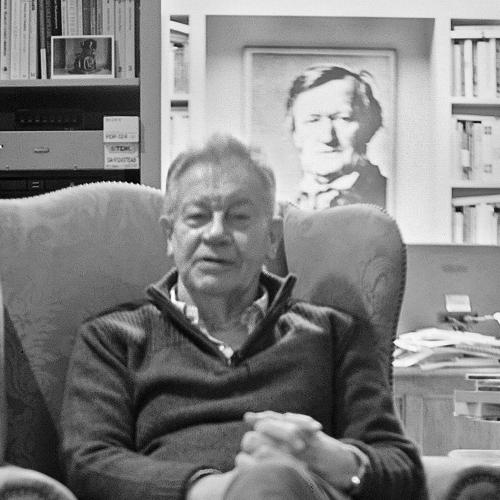COMPOSERS: Wagner
LABELS: DG
ALBUM TITLE: Der Ring des Nibelungen
WORKS: Der Ring des Nibelungen; ‘The Making of The Ring’
PERFORMER: Donald McIntyre, Heinz Zednik, Mermann Becht, Hanna Schwarz, Siegfried Jerusalem, Matti Salminen, Gwyneth Jones, Jeannine Altmeyer, Peter Hofmann; Bayreuth Festival Choir & Orchestra/Pierre Boulez; dir. Patrice Chéreau
CATALOGUE NO: 073 4057
This is a reissue of one of the extremely few video recordings that can without exaggeration be called legendary. The Bayreuth centenary staging of the Ring cycle in 1976 was a sensation, the first production which departed radically from Wagner’s stage directions. Stage director Patice Chéreau placed the action not in a mythical past but in the period during which the work was written – the 1850s-70s, and even later; his production had Wotan wearing a frock coat, the Rhine as a hydro-electric dam, the Rhinemaidens as tarts, and so forth. During the five years of its staging, it moved from being a scandal to acquiring near-classic status, and it has certainly had more influence on subsequent stagings of the Ring and of Wagner, even of opera overall, than any other single production. Every Ring cycle since has been seen as a development from it, or a reaction to it.
Pierre Boulez’s conducting, too, created a stir, with brisk tempos, lightened textures, and a kind of resolute anti-Romanticism of approach to this epically romantic work. Both production and musical performance amount to a demythologisation of the grandest of modern mythical works.
How does it stand up after almost 30 years, granted that it is sharply at odds with Wagner’s concept? Astonishingly well. Chéreau got the singers to act with an intensity and conviction still rare in opera, and he also stressed the physicality of their relationships, with a great deal of touching, some savage violence, and much passionate embracing. Other considerations apart, it makes for continuously thrilling theatre, and there are many scenes from designer Richard Peduzzi which are strikingly beautiful to look at – an almost unknown quality these days.
The cast has its weaknesses, and none of the singers has a great voice, yet they project with intelligence and clarity; so that the lack of sheer vocal grandeur – which is part and parcel of the revolutionary conception – is less apparent than it would be in a more static, monumental production. I still wish Gwyneth Jones, the Brünnhilde, were steadier, and Manfred Jung, the Siegfried, had a more attractive timbre. But here the whole is emphatically vastly more than the sum of its parts, and on its own terms a triumph. The hour-long documentary is enthralling.
Michael Tanner
Wagner: Der Ring des Nibelungen; 'The Making of The Ring'
This is a reissue of one of the extremely few video recordings that can without exaggeration be called legendary. The Bayreuth centenary staging of the Ring cycle in 1976 was a sensation, the first production which departed radically from Wagner’s stage directions. Stage director Patice Chéreau placed the action not in a mythical past but in the period during which the work was written – the 1850s-70s, and even later; his production had Wotan wearing a frock coat, the Rhine as a hydro-electric dam, the Rhinemaidens as tarts, and so forth.
Our rating
4
